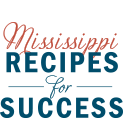Fruit and Yogurt Plate
2 oz. eq. meat/meat alternate, 1 oz. eq. whole grain, ½ cup fruit
Number of Portions: 50 Size of Portion: ½ cup fruit, 4 ounces of yogurt, 1 muffin, 1 ounce of cheese
Recipe HACCP Process: #1 - No cook
- Meat/Meat Alternate
- Whole Grains
- Fruits
INGREDIENT | MEASURE (FOR 50 SERVINGS) |
|---|---|
Apples, Granny Smith, Whole, Fresh, #4201 | 1 pound + 12 ounces |
Cantaloupe Melons, Raw, #4204 | 4 pounds + 6 ounces, as purchased |
Grapes, Red Seedless, Bulk, Fresh, #4206 | 2 pounds + 8 ounces |
Honeydew Melons, Fresh, #4207 | 5 pounds + 4 ounces |
Lettuce, Green Loose Leaf, Crowns, Fresh, #4007 | 4 pounds + 12 pounds |
Kiwi Fruit, Fresh, Whole, #4208 | 1 pound |
Strawberries, Fresh, Whole, #4214 | 2 pounds , sliced |
Cheese, Cheddar, Plank 1 oz, #1299 | 50 planks , ½ ounce slices |
Yogurt, Strawberry, #1324 | 25 containers |
Yogurt, Strawberry Banana, #1326 | 25 containers |
Muffin, Banana WGR, #1211 | 50 muffins |
DIRECTIONS
1. | Select seasonal fruits of choice, such as those listed in the ingredient list. |
2. | On the day of service; rinse the fruit under cold, running water, then drain them thoroughly. CCP: Hold under refrigeration (41 degrees F or lower) until ready for salad assembly. |
3. | If the lettuce greens are not prewashed, separate the leaves, then rinse them well under cool, running water, and drain thoroughly. Cut the leaves to use as liners for the salad containers. Cover and refrigerate until ready for salad assembly. CCP: Hold under refrigeration (41 degrees F or lower) until ready for salad assembly. |
4. | Rinse the strawberries and kiwifruit under cool, running water. Drain them thoroughly. |
5. | Cut strawberries into a fan shape. Slice kiwifruit into ¼ inch slices. Cover and refrigerate the strawberries and kiwifruit until ready for salad assembly. CCP: Hold under refrigeration (41 degrees F or lower) until ready for salad assembly. |
6. | To assemble the salads:
CCP: Hold under refrigeration (41 degrees F or lower) until ready for service. |
7. | Portion 1 salad for each serving. Each portion provides 2 oz. eq. meat/meat alternate, 1 oz. eq. of whole grain and ½ cup fruit. CCP: Hold under refrigeration (41 degrees F or lower) until ready for service. Check temperature every 30 minutes. Cover, label, and date any leftovers. |
Production Notes
Use USDA Foods products when available.
Refer to USDA FNS Food Buying Guide for School Meal Programs for quantities to purchase if recipe is altered.
If changes are made in ingredients, check crediting information and re-calculate the nutrition analysis.
"Culinary Techniques for Healthy School Meal" provides seasoning and serving ideas for salads.
Serving Notes
Fruit may be served whole or sliced, depending on student's preferences.
Miscellaneous Notes
Presentation Ideas: Line the plates with lettuce leaves prior to arranging fruit.
A container that allows space for the salad, yogurt, muffin, and cheese is recommended, as well as a clear plastic lid for eye appeal is preferable.
Crediting is based on fruit listed in the ingredients list. If serving other fruits, reference the Food Buying Guide for Child Nutrition Programs to determine the serving size required to meet the fruit component.
If other types of fruit are offered, the nutrient analysis must be recalculated.

